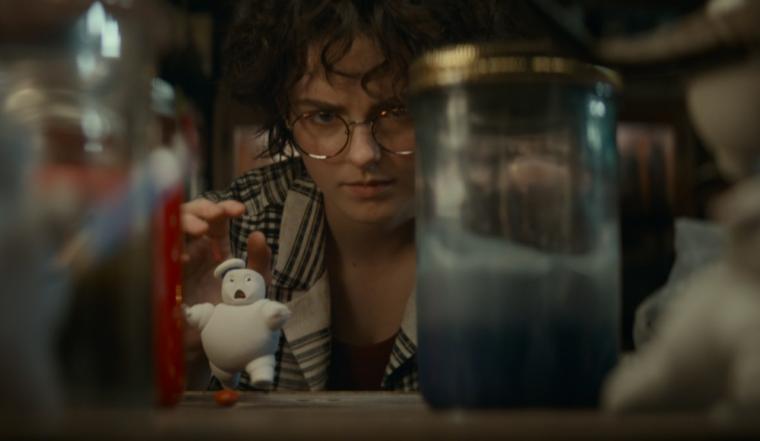
Mckenna Grace in Ghostbusters: Frozen Empire
GHOSTBUSTERS: FROZEN EMPIRE
You could argue that what's most wrong about Ghostbusters: Frozen Empire boils down to a case of too many cooks stirring the soup – or rather, too many cooks in the soup.
A sequel to 2021's Ghostbusters: Afterlife, director/co-writer Gil Kenan's comic adventure reunites us with a half-dozen of that film's debuting figures, a couple of them shoehorned in for no apparent reason. The original 'busters played by Bill Murray, Dan Aykroyd, and Ernie Hudson are back, as is Annie Potts' ally Janine Melnitz, plus William Atherton reprising his role as EPA jerk Walter Peck, who's now New York City's mayor. (Voters must have forgotten about the guy's humiliation and assholery from four decades ago.) And a fistful of new arrivals are also varying degrees of significant, and played by the likes of Kumail Nanjiani, Patton Oswalt, Emily Alyn Lind, and British comedian James Acaster. That's 15 characters we're expected to keep up with, not counting all the CGI blobs and mini-marshmallow men, and no one is likely to ever accuse Kenan and co-screenwriter Jason Reitman of Altman-esque facility with a large ensemble. At one point, theoretical leads Paul Rudd and Carrie Coon vanish from the movie for more than 20 minutes straight, and it should go without saying that you're not gonna get as much Murray as you might want ... though you may well get more Aykroyd than you want. It's sweet that he's still game to ham it up, but did Aykroyd really need to perform one segment entirely in sunglasses even though the scene was set indoors?
Yet the film's many, many actors aren't the collective problem here. Kenan and Reitman – Afterlife's director and, of course, the son of original Ghostbusters helmer Ivan Reitman – are the problem. An example of super-fan service like no other, Afterlife was a terrible movie, but at least it shook up the formula by housing its supernatural goings-on in the expansive wheat fields of Oklahoma and a nearby town Brigadoon-ed in from the mid-1950s. This new outing brings the action back to Manhattan, but the family-sentiment corn and schmaltz that at least felt stylistically appropriate (if in no way interesting) in 2021 has somehow remained, and the results are deeply underwhelming. You keep waiting for this thing to exude some of the sass and snap of 1984's Ghostbusters and – yeah, I'll say it – 1989's underrated, enjoyably flaky Ghostbusters II. What we instead get is an achingly dull, achingly unfunny companion piece that refuses to make sense or give the non-obsessives among us any reasons to care about, or even laugh at, the on-screen goings-on. When Finn Wolfhard's Trevor Spengler tells his mom about some potentially ghostly strangeness taking place in their inherited firehouse, Coon's Callie spends their entire conversation absentmindedly scrolling. That's Frozen Empire: Not worth the energy it would take to lift your eyes from your phone.
The plot involves a malevolent being that's being held captive in a metallic orb and plans to freeze the planet upon its escape. The plot is utterly irrelevant. This latest Ghostbusters sucks because it doesn't make what's tangential to the plot remotely engaging. As someone who is clearly not a super-fan – by which I mean someone who, at my 2021 Afterlife screening, roared at the tight closeup of a meaningless Twinkie – I found myself pathetically grateful for the few moments of near-amusement I got: the 'busters briefly chasing a poltergeist-infused Hefty bag; Oswalt doing his damnedest to make a massive exposition dump entertaining; a few seconds of the theme song's 1984 MTV video suggesting that Ray Parker Jr. is actually a character in this bizarre universe. Taken overall, though, I just sighed at the experience, and slumped into my seat further and further as Kenan's and Reitman's film continually struggled, and failed, to deliver anything approximating the zippy good times of Ivan Reitman's '80s blockbusters. I know that Reitman senior passed in 2022, and based on its “For Ivan” title card at the finale, Jason certainly wants to honor his father with this continuation. But couldn't he and Kenan have done so in a way that wasn't quite this, shall we say, funereal?
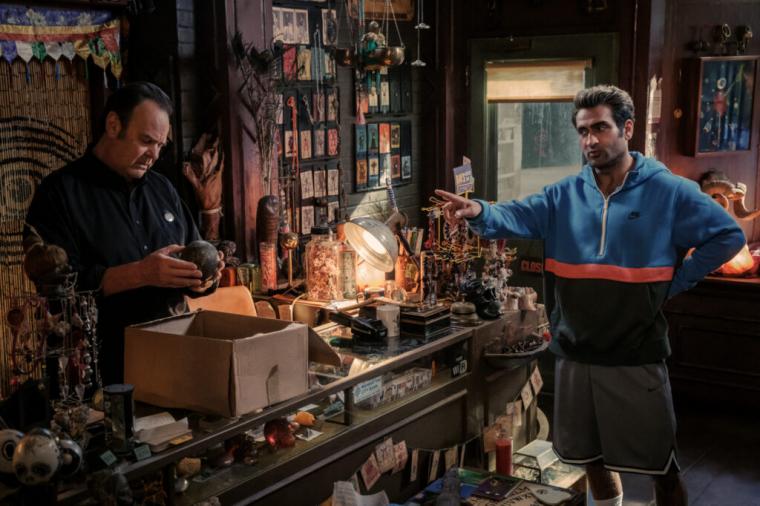
Mckenna Grace, who was the undisputed highlight of Afterlife, again plays Igor Spengler's granddaughter Phoebe. (And thank the gods of good taste that Harold Ramis isn't again resurrected beyond his will.) But after Phoebe is sidelined early on, most of Grace's screen time is devoted to a downbeat, semi-queasy friendship/flirtation with Lind's apparition Melody, who purportedly died in a tenement fire 100 years ago but looks and talks like she just walked off the set of the 2024 Mean Girls. Rudd's Gary Grooberson spends much of the film sad that Phoebe won't accept him as a father figure, but we're never made aware of whether he and Callie are even in a romantic relationship; their closest suggestion of intimacy is a high-five. Most of Hudson's screen time finds him in ultra-serious mode. When he's not playing to the rafters, and also when he is, so is Aykroyd's. Wolfhard's entire arc seems devoted to being pissed off that Trevor isn't allowed to drive the Ectomobile.
What is going on here? Why aren't there jokes? The cast's readings, especially Nanjiani's, may occasionally fool you into thinking hilarious things are being said. They're not, though, and Frozen Empire keeps blundering its visual gags, too. When that Hefty-bag poltergeist begins flopping around in the form of a takeout pizza, it's momentarily diverting. And then Kenan's routinely dead staging, with every beat lingered on a bit too long, pulls you out of the moment, in this case making you ask: What is an untouched takeout pizza even doing there? Was that pie somehow ordered and delivered right when NYC was being frozen solid through supernatural forces?
Ghostbusters: Frozen Empire is overflowing with idiocies of this sort. The firehouse's metallic bronze fire pole is melted down for weaponry and, in our next scene in the locale, magically restored. Ditto the New York Public Library lion statue that was smashed to bits – a source of potential ruination for the Ghostbusters – yet later shows up intact. (I guess NYC always keeps a spare around, just in case.) Four combined proton packs do nothing to damage their nemesis, but one blast from Phoebe's makes the monster shriek in agony – 'cuz she's got teen gumption, I guess. I'm glad that my screening's unmistakable super-fans who roared their way through this noxiousness had a blast. For my money, if Jason Reitman is going to continue this honoring-his-dad trajectory, I'd much rather he set his attentions on 1993's Dave – a far-better Ivan Reitman comedy that might actually give Sigourney Weaver reason to show up.
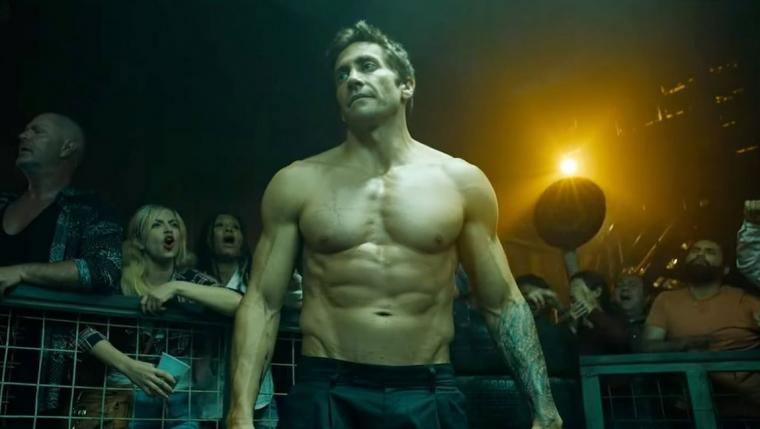
ROAD HOUSE
Please don't tell anyone. But to the best of my recollection, I've never seen 1989's Road House – that Patrick Swayze cult classic that I recently learned was named the most-watched film on cable in 2020. (As a people, we must've shared a lot of sublimated rage that year, huh?) I know, I know: It's an unconscionable lapse on my part. Especially considering I was ushering at a movie theater when Rowdy Herrington's brawl-fest was first released and could've caught it for free whenever I wanted. But nothing about the trailers, the concept, or even the star much interested me at the time, and clearly, those feelings held pretty firm over the next 35 years. However, because Hollywood loves nothing more than rebooting even its moderate hits, Road House is now back in a Doug Liman-directed version for Prime Video, with Jake Gyllenhaal filling the tight jeans previously donned by Swayze. And because I now get paid to cover these things, I decided to give it a shot.
Eh … it's okay. I can't attest to how much or little has changed in the plotting since those halcyon days of Swayze ripping an adversary's throat clear out of his neck. (Unless it happened while I was yawning, no similar event occurs here.) But the screenplay by Anthony Bagarozzi and Charles Mondry is completely serviceable he-man nonsense, with the added benefit of being quite funny during its opening 45-ish minutes, and Gyllenhaal, thankfully, isn't playing Stoic Action Stud so much as one of his grinning lunatics out of Nightcrawler or Okja.
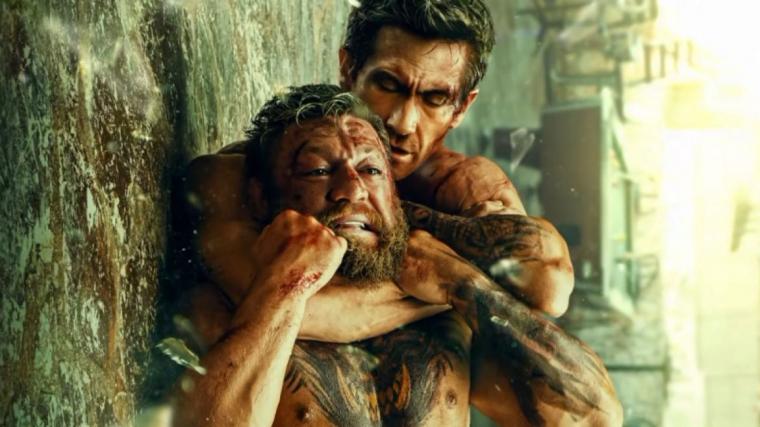
As Elwood Dalton, a former UFC middleweight champ who agrees to serve as muscle for a disreputable bar in the Florida Keys, the actor is currently so impossibly ripped that he makes Gyllenhaal's Southpaw boxer look like Kodi Smit-McPhee; you can't believe this is the same guy who, in New York, played Little Shop of Horrors' Seymour Krelborn less than a decade ago. Yet the bulk hasn't lessened Gyllenhaal's gifts for sardonic comedy, and much of Road House's initial charm comes from the weird, not-unappealing dichotomy between its star's physique and his lightness of spirit. Almost every time before kicking someone's ass, Dalton, with a mischievous twinkle in his eye, will offer a little smile of “Do you really want to do this, pal …?” before delivering bone-crunching proof of why they shouldn't have. Until the narrative forces him to be, though, the dude isn't cruel about his physical assaults, and it's hard not to fall for Dalton early on when he insists on driving the biker gang he just pummeled to the hospital himself, giving them a warning of “Bump!” in advance of a pothole.
Nothing about Liman's film comes close to equaling its lead – or rather, its lead before the Muppet Movie plotting kicks in. (Long story short, it's about an über-wealthy developer who apparently wants to purchase all of southern Florida, and – wouldn't you know it? – Dalton's Road House is the one venue whose owner refuses to sell.) And once Road House stops being a comedy, it's not really engaging as anything else. Liman's fight sequences may be kinetic, but they also grow repetitive and tiresome, and with the exception of Arturo Castro as an understandably anxious (and hilarious) hired goon, the characters are such tired genre clichés that nothing they say or do carries any weight. Still, a few participants deliver some spark: Jessica Williams as the good Samaritan who offers Dalton a job and houseboat; Billy Magnusssen as that slimeball developer; Lukas Gage as a waiter who develops a talent crush, and maybe more, on the new hire; Conor McGregor, a real-life former UFC fighter, who makes his first appearance as a malevolent enforcer wearing only shoes and socks. (He'd likely wear less if there were another decent place to stash his phone.) I may have been bored with Road House before it was half-over, but it does provide some figurative and literal punch.
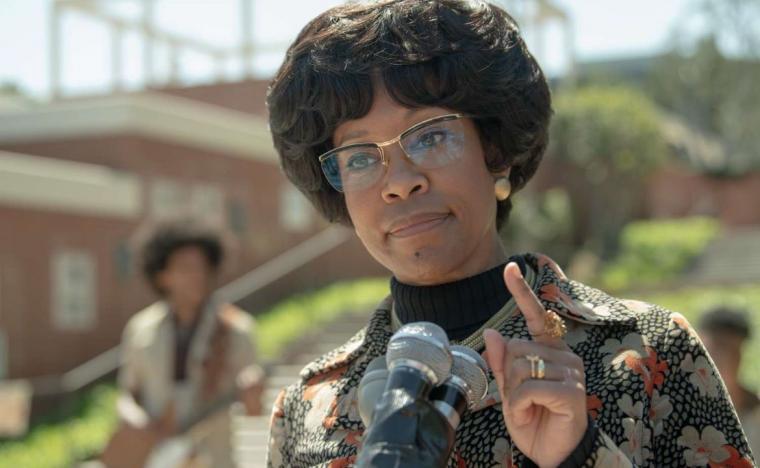
SHIRLEY
I've really been enjoying the recent trend of screen biographies on inspirational figures that focus solely on a few years or months in their subjects' lives. In Bob Marley: One Love and Rustin, for instance, we don't need to see decades' worth of history to understand how and why the reggae artist and civil-rights advocate achieved the stature of legends in their fields, although a few flashback detours do their best to fill in some gaps. We get that knowledge through precise renderings of who they were, and what they did, over brief yet specifically consequential periods of time, and the experiences don't feel lessened by keeping their focuses so narrow. (In truth, neither One Life nor Rustin are particularly great apart from their lead performances, but that's another issue, and they're certainly effective enough.) I had hoped to have an equally positive reaction to Netflix's Shirley, writer/director John Ridley's bio-drama on political icon Shirley Chisholm, which I heard would be taking a similar a-few-months-in-a-life approach. And it did. To my eyes, however, it picked the wrong few months.
It's easy to see why Ridley, the creator of the terrific three-season anthology series American Crime who also won an Academy Award for writing 12 Years a Slave, would be drawn to Chisholm. It's even easier to see why fellow Oscar winner Regina King would want to play her. (King also serves as one of the film's producers). By any conceivable metric, Shirley Chisholm, who passed away in 2005 at age 80, was an icon: the first Black woman elected to Congress; the first Black candidate for a major-party nomination for U.S. President; the first woman to run for the Democratic Party's presidential nomination; a five-year Secretary of the Democratic Caucus; a fierce, decades-long advocate for reproductive rights and the Equal Rights Amendment; a posthumous recipient of the Presidential Medal of Freedom. Not to be crass, but you can practically see the Academy Awards dangling off that list of accomplishments, and potential trophies aside, any screen biography on Chisholm would almost have to be deeply inspirational and motivational to large swaths of viewers. And maybe this one is. But in focusing Shirley almost exclusively on Chisholm's failure to land the 1972 presidential nomination, Ridley (no doubt unintentionally) undermines his own heroine, forcing us to view this passionate, vibrant woman as an eternal underdog who simply can't catch a break. That may be true regarding the film's events, but it hardly provides a sense of who Shirley Chisholm, as a complete person, really was.
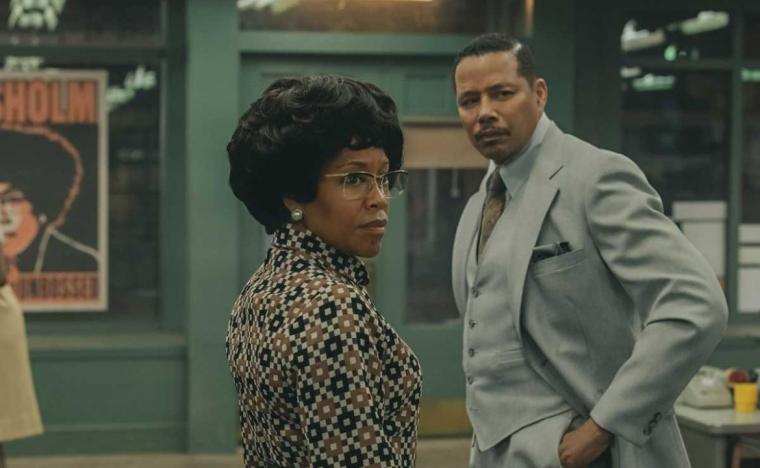
Given that she isn't allowed to demonstrate a full range of personality, and despite her somewhat wobbly Guyanese Bajan dialect, King probably does as well with Ridley's material as any actor could. From scene to scene, this Chisholm is inarguably intelligent, forceful, impassioned, strident, savvy … . She's everything, really, except distinct, because the script keeps giving King the same emotional registers to play, nearly always against some form of misogynist, racist, or political oppression. In the film's final minutes, Chisholm's remarkable legacy is celebrated on-screen by the beaming California Congresswoman Barbara Lee, who extols the advances that Shirley made for all future female politicians, and especially politicians of color. But the radiant joy that Lee exudes is precisely what's missing from Shirley itself.
Chisholm's early victories are quickly covered in a prelude montage and her later successes rushed through in perfunctory title cards at the finale, and what we're left with is a lot of blandly written diatribes and stump speeches. There's simply too little variety to make the film anything more than a rather generic history lesson, and even the presences of the usually reliable Terrence Howard, Brian Stokes Mitchell, Lucas Hedges, and André Holland – plus the much-missed Lance Reddick in one of his final roles – do little to alleviate the tedium. For a far richer look at Chisholm's story, I'd guide you instead to Hulu's sensational limited series Mrs. America and the Emmy-winning portrayal offered by an on-fire Uzo Aduba. She gets more screen time than King's Shirley does here. On more than a few occasions, she also gets to smile and laugh. Perish the thought.
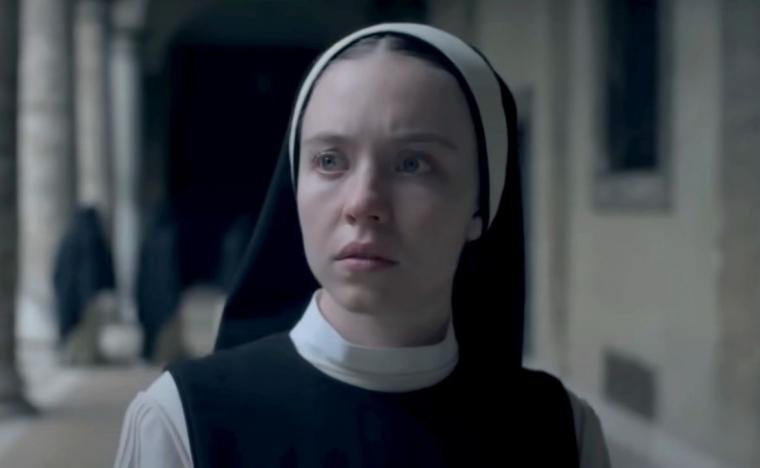
IMMACULATE and LATE NIGHT WITH THE DEVIL
If it's rare to be treated to a topnotch new horror movie on any given weekend, it's practically unheard of to be treated to two. Yet in this genre fan's opinion, that's exactly what we got in director Michael Mohan's Immaculate and writer/directors Colin and Cameron Caimes' Late Night with the Devil, both releases smartly timed for the Lenten season – a period in which we can always expect a fair number of faith-based dramas and gross-out thrillers conceivably involving Satan. Through sheer happenstance, I wound up catching both films nearly back-to-back this past Friday, and I honestly can't remember the last time I had such collective fun during a double feature. And such swift fun: Taken together, the experience lasts almost precisely three hours. I'm well past the point of receiving Easter baskets, but this pre-Easter treat had me all but hopping with joy.
The more unexpected pleasure was Immaculate, mostly because it's the type of genre staple that almost never works these days: convent horror. After an unsettling prelude that finds a novice running afoul of shadowy figures in habits, our attentions turn to the wide-eyed, innocent face of Sydney Sweeney, whose Michigan native Cecilia is traveling to Italy to join a remote sect of nuns who care for the near-deceased. The first of Mohan's and screenwriter Andrew Lobel's surprises comes immediately after Cecilia's initial interview, when she walks outside and passes people talking on their cell phones. When was the last time convent horror took place not decades or centuries ago, but in the present day? After Cecilia gets to her abbey, we meet several anticipated figures: the stern Mother Superior (Dora Romano); the suspiciously friendly priest (Álvaro Morte); the legitimately friendly fellow novitiate (Bernadetta Porcaroli); the bitter rival for God's favor (Guilia Heathfield Di Renzi). Even though it's presumably 2024, we also get the anticipated fright-flick clichés for this setting: cobwebby catacombs; unsettling cathedral spaces; ghostly apparitions; dream sequences. It's all pretty pro forma. But then, in a surprise that's not a spoiler, Cecelia finds out she's pregnant, even though she's a virgin whose hymen, per a medical exam, was unbroken when she arrived. Is it an immaculate conception as most of the Italian clergy choose to believe? Or is something possibly shifty, possibly evil, at work here?
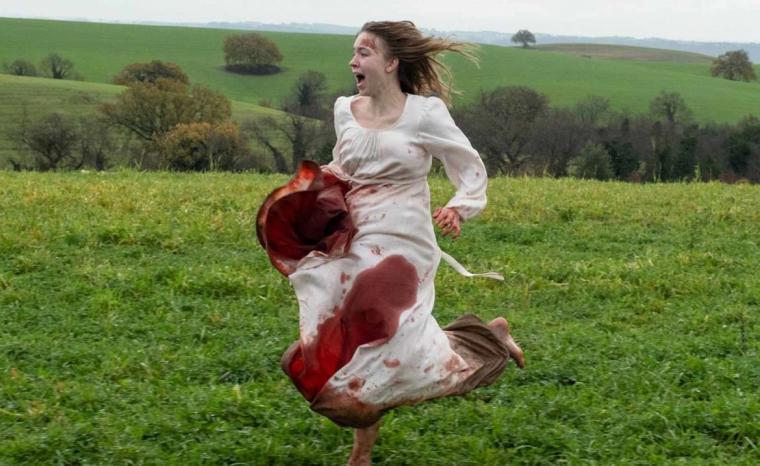
That's a trick question. Of course it's something evil. Even unworldly Cecilia is sure of that from the word go. Yet the nature of this convent's evil is so insidious and icky, and yet so socioipathically sound, that it would be a crime to reveal specifics; I was floored by the revelation, and then leaned back in my seat with a satisfied smile, thinking, “Good job, you nutbags.” There's not much that Mohan can do, or appears willing to do, with the predictable genre tenets; during the first half of his film, you may feel you've seen it all before. But then the second half lands, with Cecilia increasingly desperate to escape and consistently thwarted, and you may find yourself thinking you've never seen anything quite like it, particularly in terms of the depths of hysteria Sydney Sweeney evinces.
She's irrefutably lovely, and despite her relative youth, the 26-year-old has already demonstrated rather dazzling range. (While her beauty may suggest a stereotypical surfer girl, very little otherwise connects Sweeney's Euphoria basket case to her wizened White Lotus vacationer to her inscrutable Reality anti-heroine to her savvy Anyone but You rom-commer.) But while Immaculate proves to be strong, scary stuff, it's made immeasurably finer by Sweeney's absolute go-for-broke fearlessness. The star's final three-or-four-minute take – unbroken, just like Cecilia's hymen, and running the gamut from devastating pain to utter terror to something approaching feral grace – is quite honestly the most breathtaking example of screen acting I've witnessed maybe since Cate Balnchett's operatic incandescence in Tár. Sweeney will never receive an equal level of praise for her portrayal here. Yet I was nearly as blindsided by her work as I was by Blanchett's – and Cate didn't also make me laugh out loud with the most exquisitely timed reading of “God damn it!” imaginable.
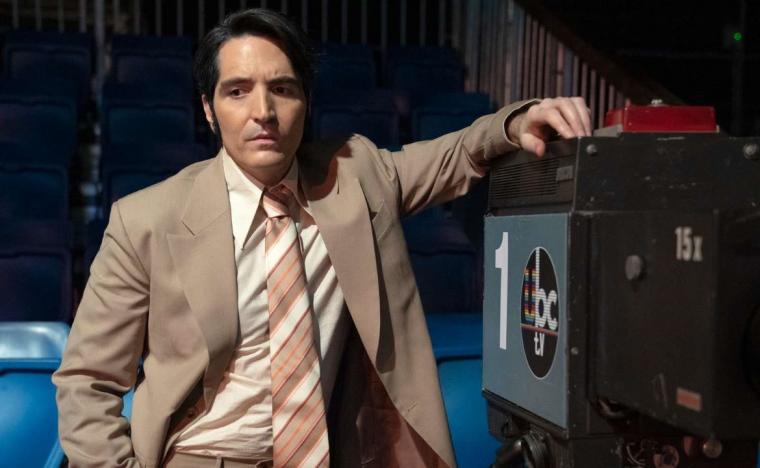
As with Immaculate, the grandest thing about the found-footage indie horror flick Late Night with the Devil is its central performance, and as a rabid admirer of David Dastmalchian, I couldn't be more delighted. He's one of those faces you know with a name you perhaps don't, and he's always excellent. He's also insanely ubiquitous, Dastmalchian's credits over the past 16 years including memorable supporting – or, more frequently, minor – roles in The Dark Knight (his debut!), Prisoners, the Ant-Mans, Blade Runner 2049, 2021's The Suicide Squad (he's Polka-Dot Man), Dune, and that Chris Nolan trifle Oppenheimer. That's hardly an insignificant list of titles, so it's astounding that it's taken until now for Dastmalchian to get the leading role his talents and presence have long deserved. Yet huzzah! Dastlamchian is in every scene of the Caimes brothers' new movie, one that seems almost tailor-made for its star's singular blend of unthreatening handsomeness and bordering-on-lunatic eccentricity, and one that, fingers crossed, might singlehandedly make him instantly recognizable, by name, to a whole generation of genre lovers.
With the entire film presented as a behind-the-scenes exposé on the most nightmarish evening of television ever recorded, Late Night with the Devil casts Dastmalchian as 1970s talk-show host Jack Delroy, a well-enough-regarded Carson wannabe who, as explained in a shrewdly edited prelude, never matched Johnny in ratings, acclaim, or Emmy wins. Following the death of his beloved wife, Delroy took a brief sabbatical from TV. But he comes back for his sixth, possibly final season of Night Owls with Jack Delroy for a can't-miss ratings grabber for sweeps week: a Halloween-night episode featuring a psychic (Fayssal Bazzi), a former magician turned professional skeptic (Ian Bliss), a parapsychologist (Laura Gordon), and a tween girl (Ingrid Torelli's Lilly), the latter of whom looks not unlike Linda Blair and is purportedly possessed by a supernatural entity. We watch the stunt in its entirety – the talk-show footage in color, the off-camera happenings in back-and-white – and wait for the inevitable scene in which that foolish cynic is proved wrong. Hoo-boy is he proved wrong.
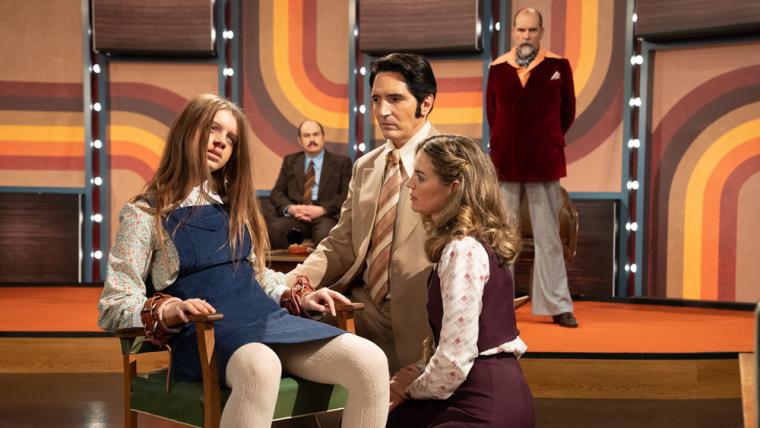
As much as I adored the Caimes' clever handling of the found-footage horror conceit, I will say that the climax was maybe my least-favorite part. It works, to be sure, even if the actual finale veers off into semi-convoluted directions that aren't as satisfying as what came before. But what comes before is awesome. As someone who actually grew up watching late-night talk shows in the '70s (when my parents let me stay up that late), I can attest to the veracity of the Caimes' staging, cinematography, and overall tenor. Dastmalchian finds the absolute right blend of carefully enunciated sincerity and snark, and Rhys Auteri, as Delroy's nightly sidekick, plays an Ed McMahon type with ideal obsequiousness and giddily escalating panic. Bazzi and Bliss may be a bit overtly hammy, but no more so than other TV-bred charlatans of the era, and Gordon is unexpectedly sympathetic – maybe the only rational person in this profoundly irrational studio-audience world.
Yet amidst the considerable humor and edgy expectation of the Caimes' scenario, Torelli's Lilly is close to traumatizing, and not just when she's growling messages from the Great Beyond; the vacuous smile the momentarily un-possessed (or is she?) tween extends to the camera is enough to suffuse your dreams. (After seeing the movie, I immediately texted a friend telling him how much I enjoyed it, and also how much better the film might play on TV, where you don't have the safety net of a cineplex auditorium and fellow patrons to get in the way of your demonic one-on-one.) And through the whole of the wonderfully inventive, admirably frightening Late Night with the Devil, I marveled at the perfectly calibrated performance of David Dastmalchian, whose Jack Delroy is both hero and villain, victim and perpetrator, and as solid a calling card for potential leading-man duties as anyone could want. To think: Relatively soon, he may be met on the street not with “Hey! You're that guy from … that movie!”, but with “Hey! You're Jack Delroy!” Maybe not the greeting a hard-working character actor dreams of, but Dastmalchian will at least always have a ready-made reply: “The devil made me do it.”








